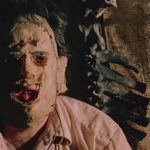 Humans
Humans  Humans
Humans  Animals
Animals 10 Animals That Humiliated and Harmed Historical Leaders
 History
History 10 Most Influential Protests in Modern History
 Creepy
Creepy 10 More Representations of Death from Myth, Legend, and Folktale
 Technology
Technology 10 Scientific Breakthroughs of 2025 That’ll Change Everything
 Our World
Our World 10 Ways Icelandic Culture Makes Other Countries Look Boring
 Misconceptions
Misconceptions 10 Common Misconceptions About the Victorian Era
 Mysteries
Mysteries 10 Strange Unexplained Mysteries of 2025
 Miscellaneous
Miscellaneous 10 of History’s Most Bell-Ringing Finishing Moves
 History
History 10 Great Escapes That Ended Right Back in Captivity
 Humans
Humans 10 Everyday Human Behaviors That Are Actually Survival Instincts
 Animals
Animals 10 Animals That Humiliated and Harmed Historical Leaders
 History
History 10 Most Influential Protests in Modern History
Who's Behind Listverse?

Jamie Frater
Head Editor
Jamie founded Listverse due to an insatiable desire to share fascinating, obscure, and bizarre facts. He has been a guest speaker on numerous national radio and television stations and is a five time published author.
More About Us Creepy
Creepy 10 More Representations of Death from Myth, Legend, and Folktale
 Technology
Technology 10 Scientific Breakthroughs of 2025 That’ll Change Everything
 Our World
Our World 10 Ways Icelandic Culture Makes Other Countries Look Boring
 Misconceptions
Misconceptions 10 Common Misconceptions About the Victorian Era
 Mysteries
Mysteries 10 Strange Unexplained Mysteries of 2025
 Miscellaneous
Miscellaneous 10 of History’s Most Bell-Ringing Finishing Moves
 History
History 10 Great Escapes That Ended Right Back in Captivity
10 Movie Releases That Caused Chaos in Theaters
Some films make headlines for their box office earnings. Others do it for the chaos they leave in their wake. From mass fainting and audience brawls to political threats and nationwide panic, these movies didn’t just stir emotions—they triggered real-world consequences.
Theaters had to call the police, cancel screenings, or post medical personnel in the lobby. Sometimes, the chaos was due to controversial content; sometimes, it came from the culture surrounding the release, and occasionally, it was just a case of perfectly bad timing colliding with public nerves.
These are 10 times movies didn’t just entertain—they disrupted reality.
Related: 10 Films Believed to Be Cursed
10 The Exorcist (1973)
When The Exorcist opened in 1973, it didn’t just terrify—it unleashed physical reactions in theaters across the country. In scenes featuring levitation, head-spinning, and a 12-year-old girl violently possessed, audience members were known to faint, scream, vomit, or bolt from their seats. Ushers reportedly found viewers passed out in aisles while others needed to be escorted out in hysterics. Theaters in New York and Los Angeles hired extra security and on-site paramedics, and a few locations even passed out “Exorcist Barf Bags” as a promotional stunt.
In Boston, a woman fractured her jaw after fainting and falling on the lobby floor, prompting a lawsuit against Warner Bros. and the theater chain. In Berkeley, protestors formed prayer circles outside of screenings. A psychiatric journal later published articles analyzing viewers’ trauma as a form of “cinema-induced stress response.” Despite the fear and controversy, the film grossed over $440 million and became the first horror movie to be nominated for Best Picture, which only made the frenzy around it worse.[1]
9 Joker (2019)
By the time Joker arrived in theaters, the hysteria surrounding it had reached full-blown national security levels. Critics accused it of potentially glorifying incel violence, and the film was compared to Taxi Driver and Falling Down for its bleak portrayal of an alienated man turning violent. The FBI and Department of Homeland Security issued internal memos about online chatter discussing attacks during screenings, citing the 2012 Aurora shooting as a worst-case scenario. Theaters around the U.S. responded with bag checks, visible police presence, and even plainclothes officers seated inside auditoriums.
The backlash wasn’t all theoretical. In Long Beach, California, a theater canceled all showings after a man with a backpack began acting suspiciously, triggering a full evacuation and bomb sweep. In Huntington Beach, a screening was paused mid-film after a patron shouted threats, sparking a panic that cleared the auditorium. Some AMC and Regal locations banned masks, face paint, and costumes for the opening weekend. Despite all this, Joker grossed over $1 billion, became the highest-grossing R-rated movie of all time, and earned 11 Oscar nominations.[2]
8 The Passion of the Christ (2004
Mel Gibson’s The Passion of the Christ wasn’t just a movie—it became a religious and political lightning rod. The film’s unflinching, graphic depiction of Jesus’s final hours made some audiences feel they were witnessing a snuff film, especially during the flagellation and crucifixion sequences, which lasted over 20 minutes with nearly no dialogue. Audiences wept, screamed, and clutched one another as the beatings escalated. Ambulances were called in multiple cities. In Kansas, a 57-year-old woman died of a heart attack during the crucifixion scene. In Brazil, another viewer reportedly had a seizure mid-film.
Beyond the physical responses, the film stirred deep divisions. Some Jewish organizations accused the film of stoking antisemitic tropes, while evangelical churches rented out entire theaters and treated the release as a spiritual event. Some theaters even offered post-screening prayer circles and baptisms in lobby areas. Critics called the violence excessive, while supporters hailed it as biblically accurate. The film earned over $600 million globally, despite being banned or restricted in several countries, and was debated from pulpits to primetime for months.[3]
7 Black Panther (2018)
Black Panther was a triumph for representation, but its release also exposed cultural fault lines and digital manipulation. As anticipation grew, coordinated troll campaigns began circulating fake stories on Twitter, often with stock photos and captions falsely claiming white viewers had been assaulted at screenings. These posts were later traced to bot accounts linked to disinformation networks, but not before they spread widely and created confusion and backlash online. Some theaters even received calls from customers asking if it was “safe” to attend.
The real-world response was overwhelmingly positive, but the sheer volume of foot traffic led to chaos. At a Brooklyn theater, staff had to open emergency exits to control a mob of walk-ins trying to sneak into sold-out showings. In Atlanta, a screening nearly broke into a physical altercation when one group tried to sit in reserved seats. Theaters added extra staff and security nationwide. Despite the rare disruptions, the film made $1.3 billion globally and reshaped the Marvel universe.[4]
6 Twilight: New Moon (2009)
If Twilight created fandom chaos, New Moon weaponized it. Midnight premieres saw thousands of teens lined up in full costume—caped, glittered, and emotionally unhinged. The biggest source of in-theater drama wasn’t the movie itself, but the fan turf wars. “Team Edward” and “Team Jacob” rivalries turned into real shouting matches. In some cities, theaters brought in extra security to manage verbal and physical fights between groups in line.
In one Utah screening, a group of teens stormed a row of saved seats, knocking over drinks and sparking a full brawl. In New Jersey, a group of mothers got into a heated argument over seating, ending in police being called to escort someone out. Some theaters banned blankets and pillows after fans were caught sneaking in additional people under coats. New Moon made over $700 million worldwide but left more than a few bruised egos—and possibly bruised shins—in its wake.[5]
5 The Dark Knight (2008)
The Dark Knight was one of the most anticipated films of the decade, but the frenzy around its release generated unprecedented tension in theaters, especially after the death of Heath Ledger. The midnight premiere broke box office records, but it also broke crowd control norms. In cities like Philadelphia, Los Angeles, and Atlanta, police were called to manage fistfights over seating, line-cutting incidents, and one case of a man throwing a soda at a mother who refused to put her phone away.
The situation escalated tragically in 2012 when a mass shooting occurred during the midnight screening of The Dark Knight Rises in Aurora, Colorado. A gunman entered the theater, released tear gas, and opened fire, killing 12 and injuring 70. While technically during the sequel, the event was so tightly associated with The Dark Knight trilogy that Warner Bros. pulled ads, canceled red carpet events, and movie theaters across the U.S. banned masks and costumes for future screenings. Theaters increased security presence for high-profile releases going forward.[6]
4 Natural Born Killers (1994)
Oliver Stone’s Natural Born Killers quickly became infamous not just for its content but also for what it seemed to unleash outside the theater. The film’s chaotic visuals and satirical portrayal of media-glorified violence inspired a loyal fan base—and a wave of concern. Critics warned it could provoke copycat crimes. Over a dozen real-life violent incidents were linked directly or indirectly to the movie, including two teenagers in France who murdered a taxi driver after watching the film.
In Louisiana, a couple named Sarah Edmondson and Benjamin Darras went on a multi-state crime spree after allegedly watching the film repeatedly, leading to a lawsuit against Oliver Stone and Warner Bros. for “inspiring” the violence. In theaters, reports emerged of audience members laughing during murder scenes, yelling out lines, or shouting at characters onscreen, creating uncomfortable viewing environments. Some theater owners pulled the film after opening weekend, citing rowdy audiences and staff safety concerns. In several U.S. cities, police were stationed at screenings due to fears of incidents.[7]
3 The Interview (2014)
A goofy comedy about assassinating North Korea’s leader sparked a real-world geopolitical crisis. When Sony announced The Interview, North Korea immediately condemned the film. But then things got serious: a massive cyberattack hit Sony Pictures in November 2014, leaking employee emails, salaries, medical records, and unreleased films. The hackers—linked to North Korean operatives—demanded Sony cancel the movie or face further consequences. Theaters scheduled to screen the film received direct threats of violence referencing 9/11.
Major chains, including AMC, Regal, and Cinemark pulled out of distribution, prompting Sony to initially cancel the release altogether, triggering backlash about censorship. Independent theaters that agreed to show the film received bomb threats, forcing police to sweep buildings and disrupt schedules. The film was eventually released on digital platforms and in a few indie theaters on Christmas Day, many of which had armed security on-site. The entire event turned a mid-tier comedy into an international flashpoint, sparking debates over free speech, corporate responsibility, and cyber warfare.[8]
2 Avatar (2009)
James Cameron’s Avatar became the highest-grossing film of all time, but not without strange psychological consequences. Viewers reported experiencing depression and existential despair after watching the vivid, bioluminescent world of Pandora. A thread on the fan site “Avatar Forums” titled “Ways to cope with the depression of the dream of Pandora being intangible” drew thousands of responses. After leaving the theater, many expressed emotional distress and disconnection from the real world.
CNN covered the phenomenon, citing therapists who had seen patients disturbed by their inability to “live in Pandora.” Some fans admitted watching the movie multiple times per week to feel better, while others claimed they felt suicidal. The phenomenon became known as “Post-Avatar Depression Syndrome,” a term that would resurface again with the release of Avatar: The Way of Water. For many viewers, the chaos wasn’t external—it was a kind of existential crisis triggered by too much beauty.[9]
1 Borat (2006)
When Borat was released in 2006, it caught many theatergoers off guard. Sacha Baron Cohen’s fake Kazakh journalist exposed real people’s biases and behaviors, leading to uncomfortable, confrontational humor. Theaters reported walkouts, arguments, and, in some cases, audience fights over whether scenes were funny or offensive. One Boston screening halted for 10 minutes after an elderly couple loudly objected to the nude wrestling scene and refused to leave.
In parts of the South and Midwest, local theaters faced protests and calls to boycott the film for its portrayal of religion, race, and the American South. In some theaters, audiences talked back to the screen like it was a live performance, shouting profanities or responses to Borat’s questions. At a Dallas theater, a group got into a heated physical confrontation after one patron told another to “go back to Kazakhstan.” Lawsuits from people tricked into appearing in the film followed for years.[10]








